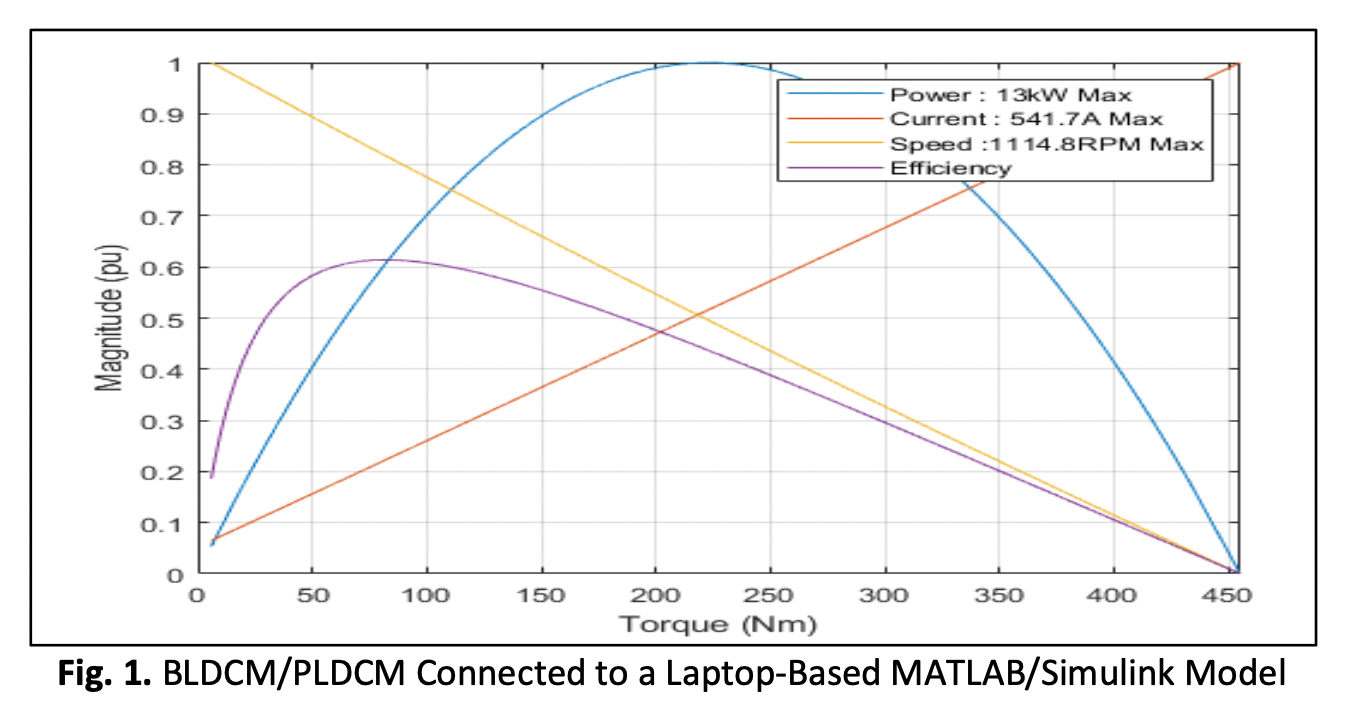Simulation of Energy Dissipation in BLDC Motor and Analysis of Speed-Acoustic Characteristics
DOI:
https://doi.org/10.37934/aram.111.1.3861Keywords:
BLDC Motor, current frequency (Hz), RMS current (A), threshold (%r), noise signal analysisAbstract
The hybrid electric vehicle combines dual propulsion systems: one employs the traditional internal combustion engine, while the other utilizes a PMDC or BLDC motor. Generally, BLDC motors exhibit an efficiency of 85% to 90%. Conversely, the PMDC motor inherently achieves an efficiency of 88% under optimal running conditions. Moreover, improving the efficiency of both motors is impeded by their design constraints. Power losses in these motors primarily stem from factors such as heat generation in the rotor (I²R losses), bearing friction, vibrations, and noise. This paper aims to investigate energy loss in a 4 kW BLDC motor manufactured by Bosch, attributable to speed-induced acoustic noise effects. Harmonic analysis of the phase current reveals the presence of odd-order harmonics, specifically those below the 11th order, resulting in current ripples. These dominant harmonic frequencies interact, ultimately generating noise and consuming a certain amount of power. These predominant frequencies correlate with fundamental electrical parameters: current frequency (Hz), RMS current (A), and threshold (%r), all associated with the motor's input power source. The 'K' factor, a parameter dependent on these three electrical factors, is calculated to determine harmonic stability. Variations in stable speeds (ranging from 1280 to 7500 RPM) are used to record 'K' factor readings. Based on IEEE Standard 85-1980 guidelines, motors are classified as either acceptable (OK) or not acceptable (not OK) according to their harmonic stability 'K' factor. Readings for each speed step are captured at a specific predominant frequency, facilitating subsequent comparisons. To validate the experimental findings, MATLAB/Simulink and a Fluke scope meter are employed to conduct power analyses for each motor, thus assessing energy loss attributed to noise. The waveform of the phase current proves instrumental in quantifying energy consumption in the BLDC motor. Notably, higher-frequency noise waves with shorter wavelengths entail greater energy consumption. Evaluating energy loss significantly contributes to the analysis of BLDC motor speed acoustics, serving to inform the design of energy-efficient hybrid electric vehicle models powered by BLDC motors, which are intended for customer service.
Downloads


























